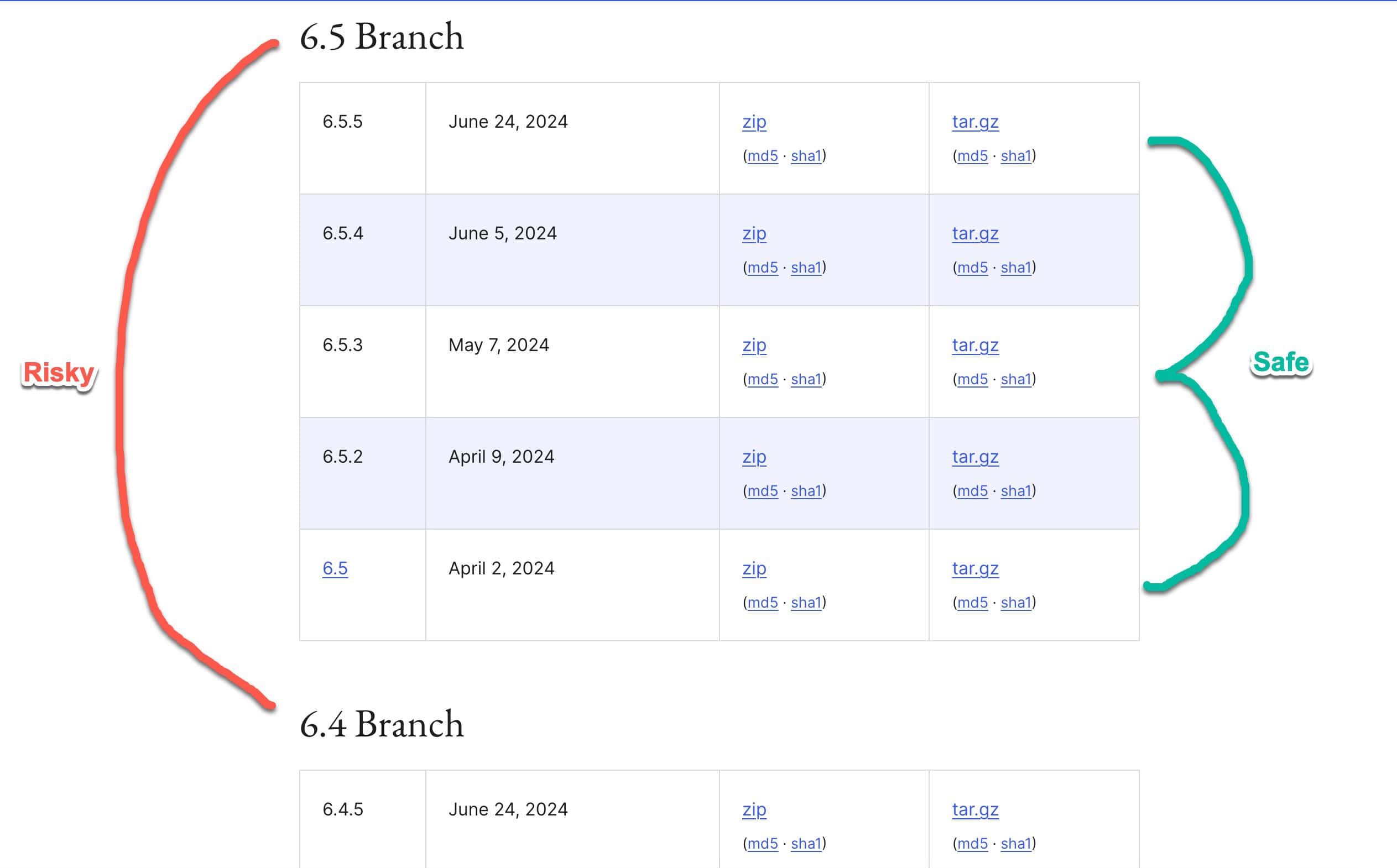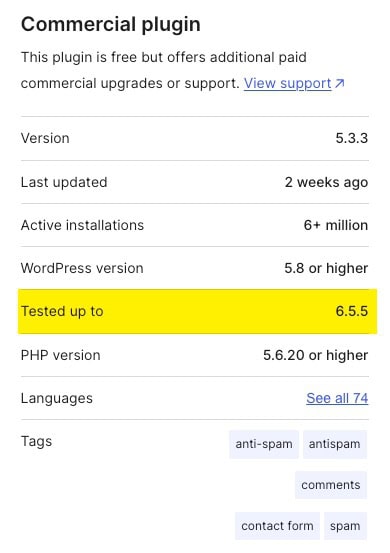WordPress Major vs Minor Updates: Which Should You Choose?
To Update or Not To Update?
WordPress updates are crucial for site security and performance. While the software alerts you to available updates, determining the optimal frequency for applying updates as they are released can be challenging. This guide will help you establish an effective update schedule tailored to your WordPress site’s needs.
Key points we will cover:
- The importance of timely updates
- Different types of WordPress Core updates
- Planning your update strategy
- Best practices for safe updating
The Importance of Timely Updates
A newly launched WordPress site represents a momentary state of perfection. Your developer likely ensured all components were current: the operating system, WordPress core, and plugins. However, this optimal condition is fleeting. As time passes, various elements of your site undergo changes:
- The underlying Linux OS releases security patches and feature updates
- Plugin authors refine and enhance their code
- WordPress core receives regular updates and improvements
Over time, your site inevitably diverges from its initial configuration. This gradual evolution of your WordPress ecosystem highlights the critical need for an update strategy. Recognizing and managing this drift is essential for preserving your site’s performance, security, and compatibility with the broader WordPress landscape.
Different Types of WordPress Core Updates
A WordPress core update is a software upgrade to the main WordPress system files. It typically includes bug fixes, security patches, performance improvements, and sometimes new features. These updates are released regularly by the WordPress development team to enhance the product’s functionality, stability, and security. WordPress Core Updates fall into two categories: major and minor updates:
- Major Updates: These updates typically include significant changes, new features, or major improvements. They can alter core functionality and may require careful testing to ensure compatibility with existing themes and plugins. This is called a branch because it represents a separate line of development that diverges from the main codebase, like a branch on a tree. A branch update in WordPress is a major version upgrade (e.g. 6.4.x to 6.5) that introduces significant changes to the core software.
- Minor Updates: These updates usually focus on bug fixes, security patches, and minor enhancements. They are less likely to affect core functionality and are generally safer to apply without extensive testing. Minor WordPress releases are denoted by changes in the second or third number of the version. For example, in version 6.5.4, the “.4” indicates a minor release.
We exercise particular caution with branch updates in WordPress. These are major version changes that represent significant new development merged into the core product. Branches are created by developers to isolate substantial changes when introducing new features or addressing major issues. Consequently, these updates often involve more extensive modifications.
In contrast, minor version changes occur within a branch. These are typically smaller, incremental updates focused on bug fixes and minor enhancements. Generally, these minor releases can be applied with less risk of disrupting your site’s functionality.
Understanding this distinction helps in formulating a more nuanced update strategy, balancing the need for the latest features against the potential risks of major changes.
You can review past and present WordPress releases at the Release Archive page, a snapshot of which is shown in the image below. A safer, minor release occurs inside a branch, such moving from 6.5.2 to 6.5.3.

Planning your update strategy
When planning your WordPress update strategy, consider the following key factors:
- Site complexity: More complex sites may require more careful update planning.
- Traffic volume: High-traffic sites need updates timed to minimize user disruption.
- Custom code/plugins: These may break with updates, requiring thorough testing.
- Hosting environment: Different hosts offer varying levels of update support and tools.
- Available resources: Consider your team’s capacity to manage and test updates.
- Security requirements: More sensitive sites may need prompter security updates.
- Backup system: Ensure you can quickly restore your site if an update causes issues.
- Testing procedures: Develop a reliable process to check functionality post-update.
- Downtime tolerance: Determine acceptable downtime for your users and business.
- Theme/plugin update frequency: Coordinate these with core updates for compatibility.
Best practices for safe updating
To update WordPress safely, always always always backup your site first. No matter what you are doing in WordPress, there is no “undo” button except to have regular backups that you can restore if needed. Always schedule updates during low-traffic times on your site.
You will also want to check for plugin and theme compatibility on the plugin developer’s page. Below is a sample of the popular Askimet plugin homepage. Pay attention to the “Tested up to” field in yellow (my highlight for emphasis). This indicates the most recent WordPress version with which the plugin has been verified to function correctly. It’s a crucial compatibility indicator for your update planning.

You want to update incrementally, starting with plugins, then themes, and finally the WordPress core. Monitor your site closely after updates to ensure everything is working as expected. We recommend not enabling automatic updates for plugins and themes unless your comfortable accepting the risk of doing so. You are better served by the slower, more cautious method of validating before updating. Manual updates trade off potential site breakage against speed, convenience, and increased security. The criticality of your site should drive your decision here.
As a matter of policy, we prefer manual updates, which we perform manually the first week of every month. This helps minimize risks and ensure smooth updates.
